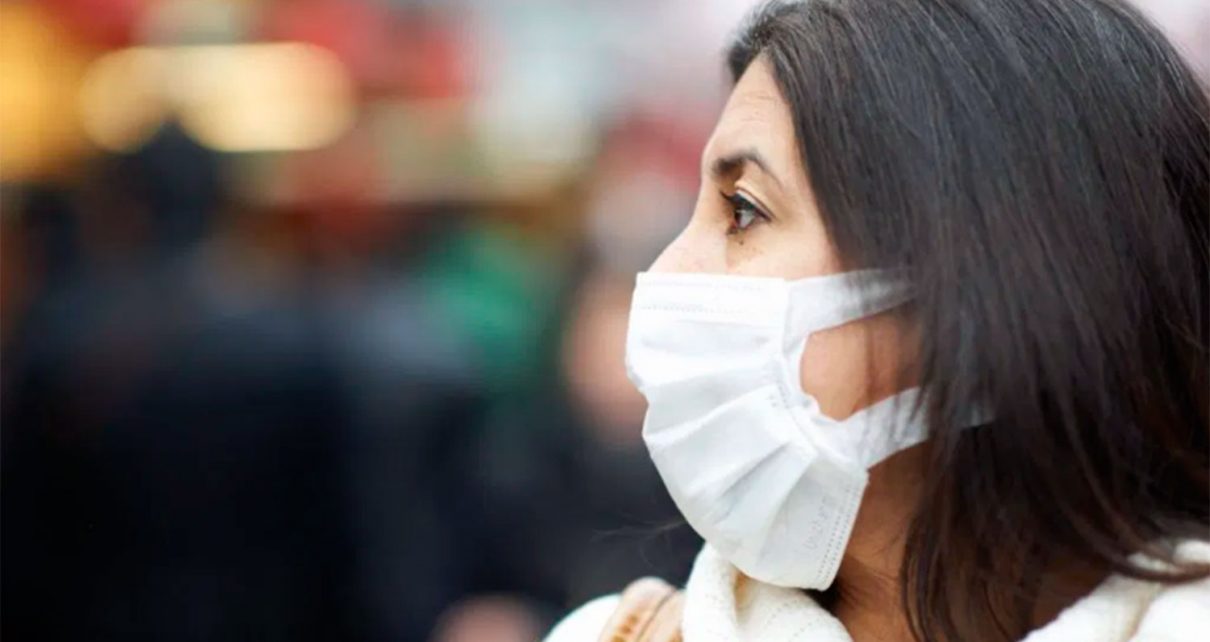Fact checked by Isabel Godfrey
The current outbreak of infections with a novel type of coronavirus has sparked global anxiety and concern that the virus might spread too far and too fast and cause dramatic harm before health officials find a way to stop it. But what are the realities of the new coronavirus outbreak? We investigate.
In December last year, reports started to emerge that a coronavirus that specialists had never before seen in humans had begun to spread among the population of Wuhan, a large city in the Chinese province of Hubei.
Since then, the virus has spread to other countries, both in and outside Asia, leading authorities to describe this as an outbreak. At the end of January this year, the World Health Organization (WHO) declared the situation to be a public health emergency.
To date, the novel coronavirus — currently dubbed “severe acute respiratory syndrome coronavirus 2,” or SARS-CoV-2 for short — has been responsible for 78,191 infections in China and 2,918 across 37 other world countries. In China, the virus has so far caused 2,718 deaths. It also led to one fatality in the Philippines.
But what do we really know about this virus? And how is it likely to affect the global population?
Medical News Today have contacted the WHO, used the information that public health organizations have offered, and looked at the newest studies that have featured in peer-reviewed journals to answer these and other questions from our readers.
What is the new virus?
SARS-CoV-2 is a coronavirus that causes coronavirus disease 2019 (COVID-19). Coronaviruses, in general, are a family of viruses that target and affect mammals’ respiratory systems. According to their specific characteristics, there are four main “ranks” (genera) of coronaviruses, which are called alpha, beta, delta, and gamma.
Most of these only affect animals, but a few can also pass to humans. Those that are transmissible to humans belong to only two of these genera: alpha and beta.
Only two coronaviruses have previously caused global outbreaks. The first of these was the SARS coronavirus — responsible for severe acute respiratory syndrome (SARS) — which first started spreading back in 2002, also in China. The SARS virus epidemic primarily affected the populations of mainland China and Hong Kong, and it died off in 2003.
The other one was the MERS coronavirus — or Middle East respiratory syndrome coronavirus — which emerged in Saudi Arabia in 2012. This virus has affected at least 2,494 people since then.
Where did the virus originate?
When humans do become infected with a coronavirus, this typically happens via contact with an infected animal.
Some of the most common carriers are bats, although they do not typically transmit coronaviruses directly to humans. Instead, the transmission might occur via an “intermediary” animal, which will usually — though not always — be a domestic one.
The SARS coronavirus spread to humans via civet cats, while the MERS virus spread via dromedaries. However, it can be difficult to determine the animal from which a coronavirus infection first starts spreading.
In the case of the new coronavirus, initial reports from China tied the outbreak to a seafood market in central Wuhan. As a result, local authorities closed down the market on January 1.
However, later assessments have since suggested that this market was unlikely to be the single source of the coronavirus outbreak, as some of the people infected with the virus had not been frequenting the market.
Specialists have not yet been able to determine the true source of the virus or even confirm whether there was a single original reservoir.
- When MNT contacted the WHO for comment, their spokespeople emphasized:
“We don’t yet know [what the specific source of SARS-CoV-2 was]. Researchers in China are studying this but have not yet identified a source.”
How is the virus transmitted?
While it likely originated in animals, the transmission of the new coronavirus from person to person can occur, though some questions about its transmission remain unanswered.
According to the WHO spokespeople who responded to MNT queries, “[r]esearchers are still studying the exact parameters of human-to-human transmission.”
“In Wuhan at the beginning of the outbreak, some people became ill from exposure to a source, most likely an animal, carrying the disease. This has been followed by transmission between people,” they explained, adding:
- “As with other coronaviruses, the transmission is through the respiratory route, meaning the virus is concentrated in the airways (nose and lungs) and can pass to another person via droplets from their nose or mouth, for example. We still need more analysis of the epidemiological data to understand the full extent of this transmission and how people are infected.”
In a press briefing from February 6, WHO consultant Dr. Maria Van Kerkhove said that, for now, “[w]e do know that mild individuals shed virus, we know that severe individuals shed virus. […] We know that the more symptoms you have, the more likely you are to transmit.”
In their “Q&A on coronaviruses,” the WHO state that “[t]he risk of catching COVID-19 from someone with no symptoms at all is very low.”
In an interview for the JAMA Network — also broadcast on February 6 — Dr. Anthony Fauci, the director of the National Institute of Allergy and Infectious Diseases, said that based on data that they have received from Chinese specialists, the new coronavirus’s “incubation period is probably between 5 and 6 — maybe closer to 5 — days.“
That is, the virus likely takes about 5–6 days to give rise to symptoms once it has infected a person.
Although the WHO note that experts estimate that the new virus’s incubation period may last anywhere between 1 and 14 days, they suggest in their coronavirus Q&A section that the most likely duration is about 5 days.
How does it compare with other viruses?
Researchers from Chinese institutions were able to use state-of-the-art genome sequencing tools to identify the DNA structure of the novel coronavirus.
It has emerged that SARS-CoV-2 is most similar to two bat coronaviruses known as bat-SL-CoVZC45 and bat-SL-CoVZXC21 — its genomic sequence is 88% the same as theirs.
The same study shows that the new virus’s DNA is about 79% the same as that of the SARS coronavirus and approximately 50% like that of the MERS virus.
Recently, a study by researchers in China suggested that pangolins may have been the initial propagators of SARS-CoV-2, as its genomic sequence appeared to be 99% like that of a coronavirus specific to these animals.
Since then, however, other specialists have cast doubts over this idea, citing inconclusive evidence.
What are its symptoms?
Like previous coronaviruses, the novel coronavirus causes respiratory disease, and the symptoms affect respiratory health.
According to the Centers for Disease Control and Prevention (CDC), the main symptoms of COVID-19 are fever, cough, and shortness of breath.
“Current information suggests that the virus can cause mild, flu-like symptoms, as well as more severe disease. Most patients seem to have mild disease, and about 20% appear to progress to more severe disease, including pneumonia, respiratory failure, and, in some cases, death,” WHO spokespeople told MNT.
In their press briefing from February 27, WHO officials also pointed out that a runny nose is not usually a symptom of COVID-19.
In an official WHO Q&A session, Dr. Van Kerkhove explained that as the symptoms of COVID-19 can be very generic, it can be difficult to distinguish between them and the symptoms of other respiratory infections.
To understand exactly what a person is dealing with, she said, specialists test viral samples, checking to see whether the virus’s DNA structure matches that of SARS-CoV-2 or not.
“When someone comes in with a respiratory disease, it’s very difficult — if not impossible — initially to determine what they’re infected with. So, because of this, what we rely on are diagnostics [molecular tests],” said Dr. Van Kerkhove.
What is its impact?
Many people are worried about whether the current outbreak will evolve into a pandemic, and public worries have become amplified by the CDC’s telebriefing from February 25, which asked U.S. citizens to be prepared for that possibility.
However, WHO officials argue that declaring a COVID-19 pandemic may not be a constructive approach to the current public health emergency.
In a declaration on February 26, WHO’s director-general, Dr. Tedros Adhanom Ghebreyesus stated that “[u]sing the word pandemic carelessly has no tangible benefit, but it does have significant risk in terms of amplifying unnecessary and unjustified fear and stigma, and paralyzing systems.”
Many questions also remain about how SARS-CoV-2 compares with other viruses in terms of its rates of infection and mortality.
In response to questions about this, the WHO spokespeople told MNT that “[t]his is a new disease, and our understanding is changing rapidly. We will continue to analyze information on both current and any new cases.”
- “We don’t yet know many details about the mortality rate from SARS-CoV-2, and studies are ongoing now. With MERS, we know that approximately 35% of reported patients with [MERS coronavirus] infection have died. For SARS, WHO estimated that the case fatality ratio of SARS ranges from 0% to 50% depending on the age group affected, with an overall estimate of case fatality of 14% to 15%.”
– WHO spokespeople
So far, the number of infections and deaths that COVID-19 has caused is also smaller than the number resulting from recent outbreaks of particularly harmful influenza viruses, such as swine flu (H1N1).
“On H1N1, From April 12, 2009, to April 10, 2010, the CDC estimated there were 60.8 million cases, 274,304 hospitalizations, and 12,469 deaths in the United States due to the (H1N1)pdm09 virus. Additionally, the CDC estimated that 151,700–575,400 people worldwide died from (H1N1)pdm09 virus infection during the first year the virus circulated,” the WHO spokespeople told MNT.
According to recent assessments, SARS-CoV-2 seems to be more infectious than other coronaviruses — such as those that cause SARS and MERS — but less likely to lead to death.
Some estimates suggest that the death rate of the new coronavirus is in the range of 2–3%, but there are no official numbers in this regard, as it is hard to tell how the outbreak will develop.
In the WHO press briefing from February 6, WHO officials reiterated that the people most at risk of experiencing severe illness due to a SARS-CoV-2 infection are older adults and individuals who have other health conditions that compromise their immune system.
“Being over 80 is the highest risk factor” for [SARS-CoV-2]-related death, WHO officials also said in the press briefing.
Other reports note that very few children have become infected with the new coronavirus. However, a recent preliminary study — not yet peer-reviewed or published in a journal — claims that children face the same risk of infection as adults.
Among adults, some reports suggest that men might be more at risk than women.
How can we prevent infection?
Official WHO prevention guidelines suggest that to avoid infection with the coronavirus, individuals should apply the same best practices for personal hygiene that they would to keep any other virus at bay.
According to the WHO spokespeople who replied to MNT queries:
- “Standard recommendations to prevent infection spread include regular hand washing, covering [the] mouth and nose when coughing and sneezing, [and] thoroughly cooking meat and eggs. Avoid close contact with anyone showing symptoms of respiratory illness, such as coughing and sneezing.”
As for wearing protective masks, WHO guidelines state that people need only do this if they are caring for someone who has COVID-19.
Masks should cover the nose and mouth and be tightly secured. People should thoroughly wash their hands before putting on a new mask, make sure that they dispose of used masks appropriately, and clean their hands once again after removing them.
How is the virus treated?
There are currently no targeted, specialized treatments for infections resulting from the new coronavirus. When doctors detect a SARS-CoV-2 infection, they aim to treat the symptoms as they arise.
In the WHO Q&A, Dr. Van Kerkhove explained that “[b]ecause this is a new virus, we don’t have specific treatments for that virus. But because this virus causes respiratory disease, those symptoms are treated.“
“Antibiotics won’t work against a virus,” she also emphasized.
What steps are researchers taking?
In the same Q&A, Dr. Van Kerkhove noted that “there are treatments that are in development” for the new coronavirus. Over the years, she said, “many treatments [have been] looked at to treat other coronaviruses, like the MERS coronavirus.”
“And hopefully, those treatments can [also] be useful for the novel coronavirus,” she continued.
There are currently clinical trials underway to find a treatment and a vaccine against the MERS coronavirus, which, if successful, could lay the groundwork for a SARS-CoV-2 vaccine and COVID-19 treatment.
Some scientists are also experimenting with using antiretroviral therapy, which is a treatment for HIV, against the new virus. But why might these kinds of treatments hold any promise when it comes to fighting off this coronavirus?
According to some studies, the combination of antiretroviral drugs that scientists are experimenting with — lopinavir and ritonavir — is able to attack a specialized molecule that HIV and coronaviruses both use to replicate.
Another allegedly promising avenue is using baricitinib — a drug that doctors use to treat arthritis — against the new coronavirus. The researchers who came up with this idea explain that it is likely that SARS-CoV-2 can infect the lungs by interacting with specific receptors present on the surface of some lung cells.
But such receptors are also present on some cells in the kidneys, blood vessels, and heart. Baricitinib, the researchers say, may be able to disrupt the interaction between the virus and these key receptors. However, whether or not it will really be effective remains to be seen.
In a press briefing from February 5, WHO officials explained investigators’ preference for experimenting with existing drugs in fighting off the new coronavirus.
Such drugs, they said, have already gained official approval for use against other specifications, meaning that they are largely safe. As a result, they need not go through the extensive series of preclinical trials and clinical trials that new drugs require, which can take a very long time indeed.





